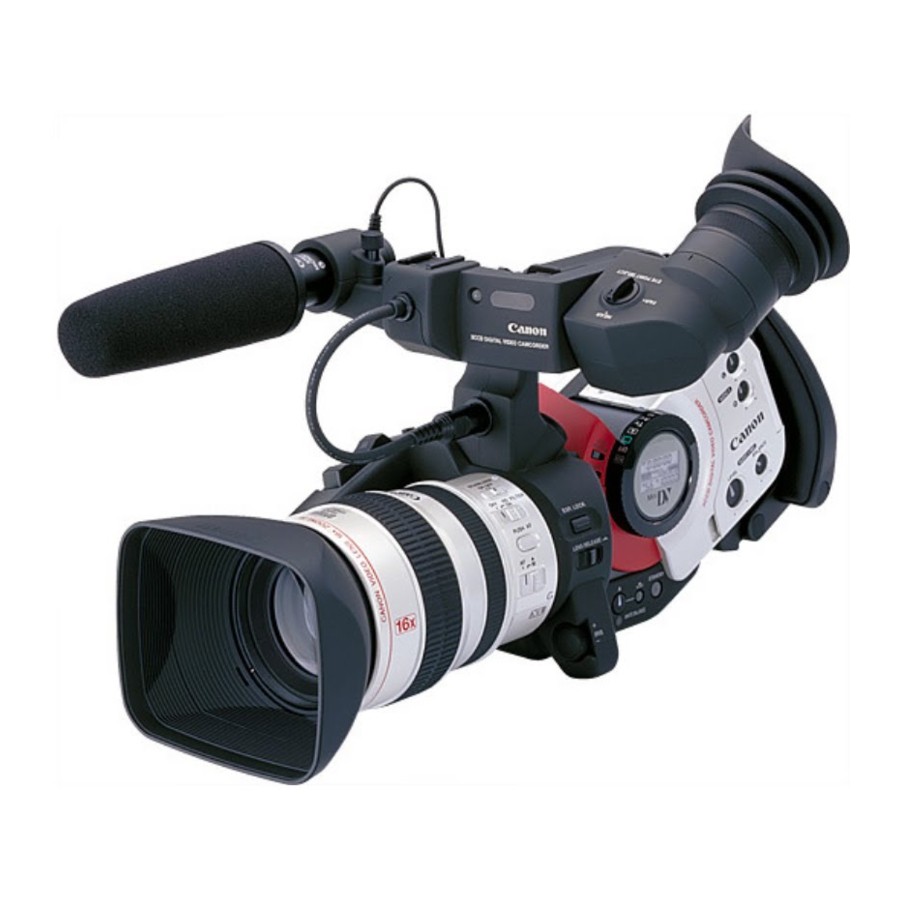Canon XL 1 User Manual - Page 20
Browse online or download pdf User Manual for Camcorder Canon XL 1. Canon XL 1 26 pages. Camcorder
Also for Canon XL 1: Brochure (8 pages), Specifications (1 pages), Instructions (2 pages), Brochure & Specs (8 pages), User Manual (9 pages), Manual (9 pages)

distribute 8-bit audio anymore. Modern 16-bit codecs provide better quality at a
smaller file size than 8-bit codecs were ever able to.
• 16-bit sampling This bit depth is the current standard for audio distribution. Most
modern codecs and all audio CDs use 16-bit sampling as well.
• 20-bit sampling This bit depth is used for professional audio recording to provide a
better dynamic range than 16 bits. Codecs that support 24-bit audio can effectively
take advantage of 20-bit sources.
• 24-bit sampling This bit depth is rapidly becoming the standard for professional
audio recording because it provides more sonic detail than 16-bit sampling, meaning
you can use many more effects and layers without introducing errors.
Channels
Most audio from computers is either mono with a single channel or stereo with two
channels. Low bit rates generally use mono because it requires fewer bits.
There are techniques you can use to produce video that compresses well:
• Camera motion The amount and type of camera motion has a huge effect on the
compressibility of content. Camera motion changes every pixel of every frame.
Lack of camera motion is the simplest, of course. But modern codecs can encode
camera motion, such as that created using dollies, quite well. Tilts and pans are
more difficult. Depending on the codec, rotating the camera (a Dutch) can be trivial
or extremely costly in compression efficiency. The most difficult motion for any
codec is hand-held camera motion with random jostling.
• Shutter speed This speed controls how long the aperture is open in the camera, and
hence, how long light hits the film or the CCD. Slower shutter speeds let through
more light, and hence less grain, which helps compression. Slower shutter speeds
also cause moving parts of the image to become blurry, which makes them easier to
compress.
• Backgrounds A difficult motion for codecs is foliage rustling in the breeze. Foliage
is green, which makes up the majority of luma and therefore gets allocated many
bits in the compression. Leaves have hard, irregularly shaped edges, and details that
require many bits to encode well. Additionally, the motion of foliage in the breeze is
largely random, with leaves constantly overlapping and revealing, all motions that
are very difficult for motion estimation to handle.
• Depth of field A useful and subtle technique for controlling the complexity of
images is depth of field. By managing the depth of field, you can keep unimportant
objects in the background or close foreground out of focus while clearly showing
the actual subject of the shot. Depth of field is very common in cinematography and
photography, so it looks natural to the audience.
20
